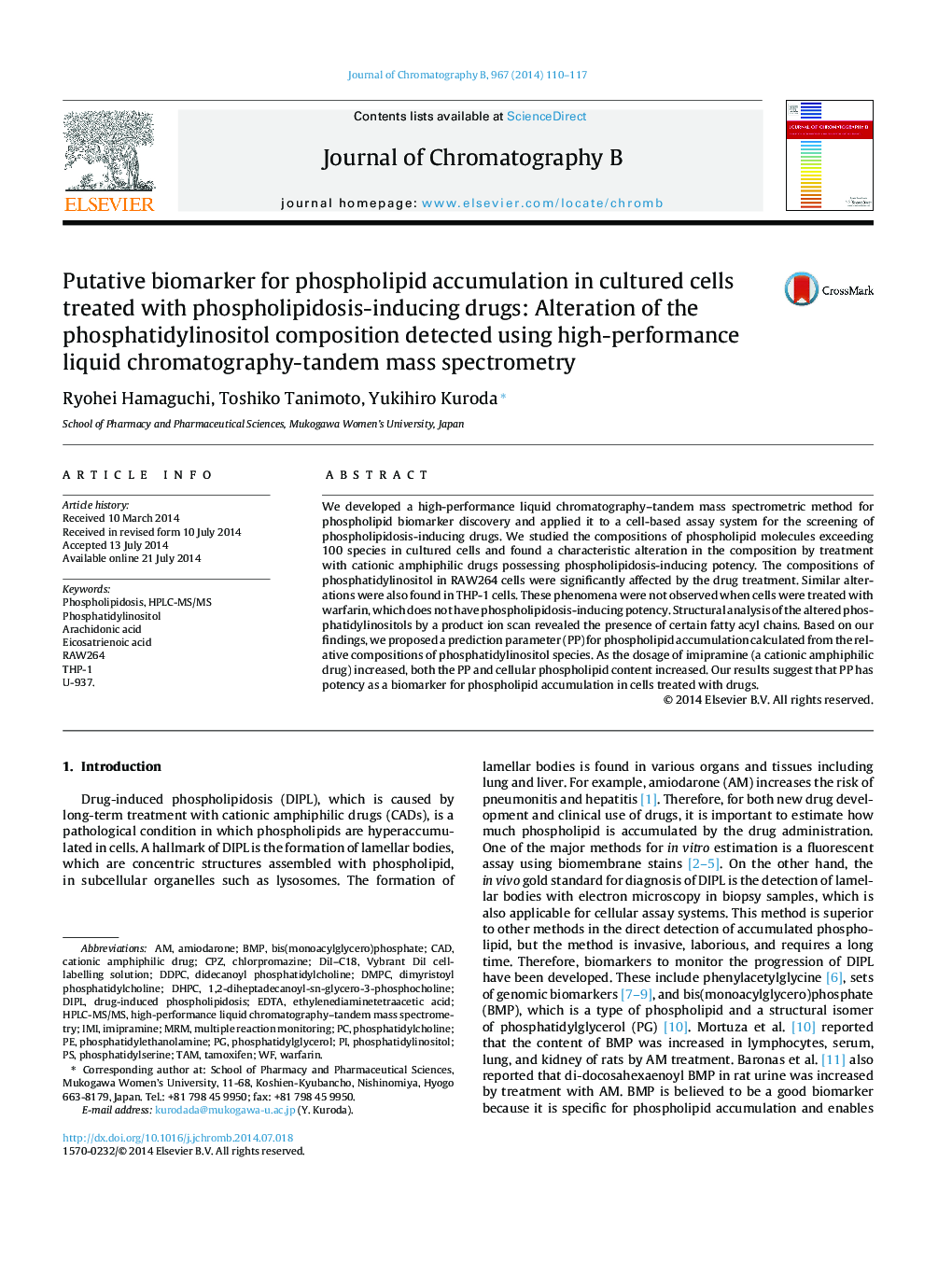| Article ID | Journal | Published Year | Pages | File Type |
|---|---|---|---|---|
| 1215737 | Journal of Chromatography B | 2014 | 8 Pages |
•An LC-MS/MS method was developed for phospholipid biomarker discovery.•Extracts from cells treated with phospholipidosis-inducing drugs were analysed.•An alteration in phosphatidylinositol composition was detected.•This alteration was dose-dependent.•Acyl chains of the altered phosphatidylinositols were identified.
We developed a high-performance liquid chromatography–tandem mass spectrometric method for phospholipid biomarker discovery and applied it to a cell-based assay system for the screening of phospholipidosis-inducing drugs. We studied the compositions of phospholipid molecules exceeding 100 species in cultured cells and found a characteristic alteration in the composition by treatment with cationic amphiphilic drugs possessing phospholipidosis-inducing potency. The compositions of phosphatidylinositol in RAW264 cells were significantly affected by the drug treatment. Similar alterations were also found in THP-1 cells. These phenomena were not observed when cells were treated with warfarin, which does not have phospholipidosis-inducing potency. Structural analysis of the altered phosphatidylinositols by a product ion scan revealed the presence of certain fatty acyl chains. Based on our findings, we proposed a prediction parameter (PP) for phospholipid accumulation calculated from the relative compositions of phosphatidylinositol species. As the dosage of imipramine (a cationic amphiphilic drug) increased, both the PP and cellular phospholipid content increased. Our results suggest that PP has potency as a biomarker for phospholipid accumulation in cells treated with drugs.
